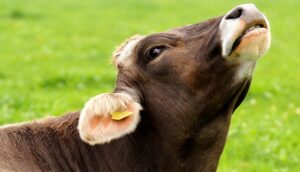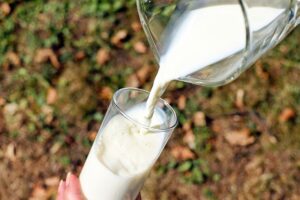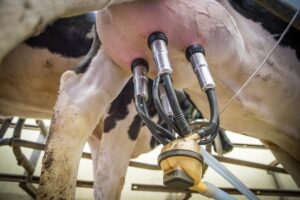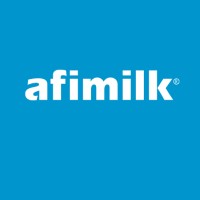Enhanced Milk Production Techniques from the Land of Milk and Honey
Are you ready for a riddle?
Milk is crucial for the development of human bodies but cows are harmful to the environment. Dairy farmers must make money but the milk production business is extremely challenging. There is an inverse relationship between a cow’s fatigue and the quantities of milk she produces. The more milk she produces, the more difficulty she has getting pregnant. Cows are fairly fragile creatures; stress them too much and their deterioration is usually irreversible. So, how can more milk be profitably produced without harming the herd or contributing to global warming?
Since any particular cow emits essentially the same levels of methane and ammonia regardless of how much milk she produces, dramatically improving the milk output per cow means fewer cows will be needed. Applying the collection and computational properties from the Internet of Things and Big Data, a company from the land of milk and honey is championing the technology to boost milk output per cow. Afikim, Israel-based Afimilk deserves some of the credit for Israel having the world’s most productive cows; on average, each Israeli cow produces 12 tons of milk annually, roughly double the output achieved in Australia and Germany.
Before we delve into the solution to the riddle presented above, let’s take a closer look at the riddle.
Why is Milk Important in Our Diet?
Milk provides 16 essential nutrients that help nourish healthy bodies and minds, by far more than any other natural beverage. Milk and milk products provide approximately 73% of the calcium—critical for strong bones and teeth—available in the food supply. The phosphorus found in milk helps the body absorb calcium. At least 3% of the content of milk is in the form of protein which builds and repairs body tissues and forms antibodies that help fight infections. Milk is also a significant source of riboflavin (vitamin B2) which helps promote healthy eyes. Milk’s lactic acid exfoliates skin, its enzymes help smooth skin and its amino acids help keep skin moisturized.
Milk is especially important for children as it is a nutrient dense food. For children too impatient to work their way through a plate of vegetables at one sitting, downing a glass of milk is a much more expedient way to ingest a similar amount of nutrients. Further, the nutrients milk provides are accompanied by relatively few calories.
Why Are Cows Detrimental to the Environment?
Cows are polluters par excellence. Much of the nitrogen in their manure turns into ammonia due to bacterial degradation. At least the manure can be collected and contained, not so with other bovine excretions. Cows are like Miracle-Gro for methane production; the same microbes that aid in cows’ digestion produce methane as a byproduct. In fact, any given cow produces at least 100 liters of methane every day. The overwhelming majority of cow-produced methane is emitted through belching, with most of the remainder of such enteric fermentation a function of flatulence. It has been reported that 26% of the total methane emissions in the United States are a result of bovine belching. While methane does not linger in the atmosphere as long as carbon dioxide, it is at least 25 times more potent as a greenhouse gas over a 100-year period.

Why is the Milk Business Particularly Challenging?
Dairy farms are extremely capital intensive. Cows do not produce milk until they are roughly two years old—but they must be fed and cared for every day. Farms are plagued with high turn-over among their employees. Pricing is stressed due to supermarkets sourcing their private label milk through price-based tenders. Diseases can ravage entire herds in a matter of days.
Cows must be milked every day and the output has a very limited shelf life. Fresh milk is a commodity that cannot be transported long distances. Demand for milk is inelastic; consumers will not buy more milk when prices fall. On the contrary, producers tend to exacerbate supply gluts by futilely trying to preserve revenues by boosting their output. Seasonality contributes to supply-demand imbalances. More milk is produced in the spring when cows graze on green, lush grass but consumers drink less milk during the spring and summer. Boom and bust cycles occur with regularity. To wit, American farmers actually poured almost 50 million gallons of unsold milk into holes in the ground in 2016 while the Irish Farmers Association warned of milk shortages on supermarket shelves.
What Must be Done to Stimulate Milk Production?
Comfortable cows are much more prolific producers than agitated ones. To get the best performance and most pregnancies out of a milk cow, she has to be kept cool, well-fed and well-rested. She needs to socialize with other cows but not feel crowded. In fact, European Union law requires straw bedding and for calves to be placed into groups when they reach eight weeks.
Now we have another bit of a riddle: The more milk a cow produces, the more sensitive she becomes. Contrary to conventional wisdom, cows do not conform to herd mentality—each cow is highly individualistic. So how can dairy farmers that manage hundreds of cows know which ones are fatigued, sick, hungry, hot or ovulating? As mentioned, once a cow takes a turn for the worse, the deterioration is usually irreversible. False signals are also problematic, farmers cannot afford to overfeed or lavish unnecessary medical attention on cows that do not need it. Given that feed costs range from one-third to one-half of dairy farm costs, carpet bombing the herd with more feed could be ruinous to the farm and injurious to the cows.

Afimilk Solves the Milk Production Riddle with Data
Afimilk monitors approximately four million individual cows in some fifty countries. The Company gathers reams of data about each cow, synthesizes the data and sends reports and alerts regarding the well-being of the monitored cows to dairy farmers.
The Company uses three primary data capture tools. First, scales are used to weigh the cows. Second, cows are outfitted with smart tracking devices, often in the form of neck collars. These sensors never stop functioning during their five year lives, require no battery replacement during that time and transmit data about the cow every five to 15 minutes. Embedded pedometers measure the cow’s eating time, resting time, distance walked and detect when the cow is getting fidgety. The tracking devices also detect other states that the cow experiences such as when she is ruminating (regurgitating her food).
The third set of Afimilk’s data capture tools are found on the milk line. One device quantifies milk components—such as fat, protein and lactose—in the milk that each cow produces. The other device on the milk line measures the milk’s weight and conductivity.
Empowering Dairy Farmers with Data
What is the connection between Afimilk collecting so much data about specific cows and the profitability of the farm or the well-being of the herd?
With the extensive data that Afimilk collects, alerts can be sent with bullseye accuracy regarding cows in need of more attention. If a cow is not resting enough or is walking too much, she might be in need of more rest. If a cow is too hot, she might need to spend more time in the cowshed. Data interpretation may indicate that selected cows need to eat more or that their feed should be adjusted with supplements or mixed with crops such as alfalfa.
If conductivity tests that measure the current flowing through produced milk reveal abnormal pH levels, the contributing cow could have mastitis which is a potentially fatal mammary gland infection. If the ratio of fat-to-protein in a cow’s milk deviates too far from one-to-one the cow may have a negative energy balance. This means the cow is less likely to become pregnant because she is producing too much milk, and burning too much protein, relative to the feed she is consuming. Without such continuous monitoring, cows would be subjected to expensive blood or urine tests, risk being treated without being tested, or remain neglected.
Data collection becomes very valuable when impregnating cows. Dairy farmers want the most prolific milk producers to reproduce so that the best genetic lines will endure. However, the best milk producers have the most difficulty getting pregnant. Since the window for insemination is very tight, pinpointing when a cow is ovulating is extremely important. Cows should become pregnant between 60 and 100 days from their last calving. Since pregnancy rates are below 50%, more than one attempt is usually necessary to impregnate cows. The longer it takes to impregnate a cow the more money will be lost as a result of delays in the start of the next lactation (which only occurs after calving). Measuring a cow’s activity and rumination patterns enable farmers to predict calving and thus determine when farmhands should be available to assist with the birthing process in case any complications arise.
Proof is in the Pudding
One example of Afimilk’s technology boosting milk output comes from Vietnam. Several years ago, Vietnam imported cows from New Zealand, each of which was producing an average of four tons of milk a year. Since the conditions (such as temperature) in Vietnam are much less conducive to milk production, one would think that those imported Kiwi cows would experience dwindling production. With Afimilk’s data management capabilities, the opposite happened; the cows soon began producing 10 tons of milk a year.
Points for Discussion with Management
The following are among the legitimate questions investors could pose to Afimilk’s management:
• There is an adage, “You can’t manage what you can’t measure.” What, if anything, is Afimilk doing to measure the methane and ammonia released by specific cows?
• Is Afimilk doing anything to reduce the lactose quotient found in milk? (Lactose is one of the allergens shoppers are looking to avoid.)
• Would Afimilk consider making available to consumers data that it collects relative to milk produced? For example, could we get to the point where I buy a gallon of milk, scan a code and learn about the cow that produced the milk? Could this be a revenue generator for Afimilk?
• Does the desired end product (e.g. milk versus cheese) make a difference in how cows should be managed or in the kinds of data that should be collected and analyzed?
• To what extent do Afimilk’s customers expect the Company to manage their cows beyond enhancing milk output and reproduction? In other words, how important is it for Afimilk’s customers that their cows will yield higher residual values?
• It has been reported that almond, coconut and other plant-based milks are taking market share from organic milk. Do you believe such shifts are mere flashes in a pan or will they prove to be persistent trends? If you believe consumer preferences are shifting what is Afimilk doing to address such developments?
• Does Afimilk’s growth strategy entail searching for greener pastures? Given that Afimilk already operates in approximately 50 countries, how many virgin markets await Afimilk? If Afimilk’s growth strategy calls for deeper penetration in its existing markets, does that mean that Afimilk will pursue smaller dairy farmers as customers? If so, would these newer and smaller customers be less profitable than the Company’s larger legacy customers? Can Afimilk’s technology be used to manage other farm animals?
• How has Afimilk’s employee-to-monitored cow ratio been trending in recent years? How much does this ratio vary among the Company’s customer base?
• Suppose that some of Afimilk’s customers found it very difficult to retain their employees. This scenario could arise as a result of a stronger economy or more diligent enforcement of immigration laws in countries such as the United States. Would Afimilk’s services become more important to these customers seeking to maintain high productivity or would Afimilk’s services become less important to these customers because they would lack the manpower to manage cows individually?
• Highly intelligent investors—such as Bill Gates, Jeremy Coller, Jack and Suzy Welch, Richard Branson, and Cargill—have invested in companies pursuing clean meat (manufacturing meat from cell cultivation rather than from raising animals). How would Afimilk’s business be affected if clean meat begins to take market share away from processing cows? Are you aware of efforts to produce milk from cell cultivation?
Headquarters: Kibbutz Afikim, Israel
Investor Relations: market@afimilk.co.il

Description
Afimilk is a global leader who has revolutionized dairy farm technology and herd management with the introduction of the world’s first electronic milk meter in 1978. Since that time, the company has led the industry with several ground-breaking developments, including the first use of conductivity for mastitis detection, the first commercial heat detection pedometer and the first dairy herd management system. Today, Afimilk operates in more than 50 countries serving more than 15,000 dairy farms and over 10 million cows through a global network of 250 dealers.
Industry
Food Technology
Year Founded
1978
Ownership
Private
 Solution Nation
Solution Nation